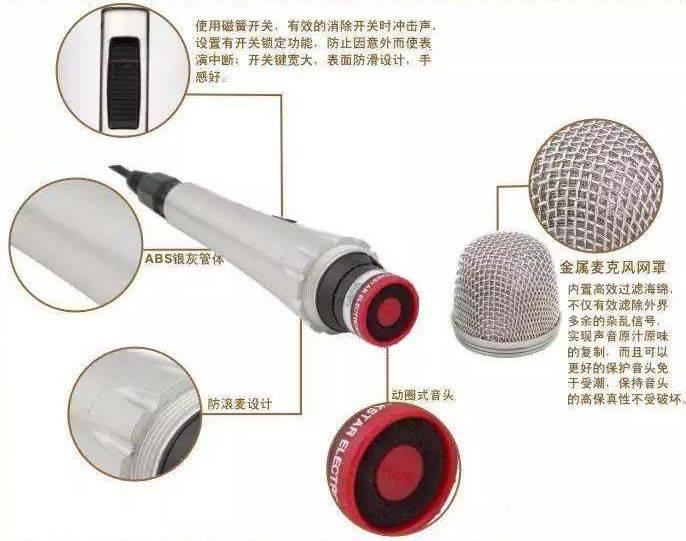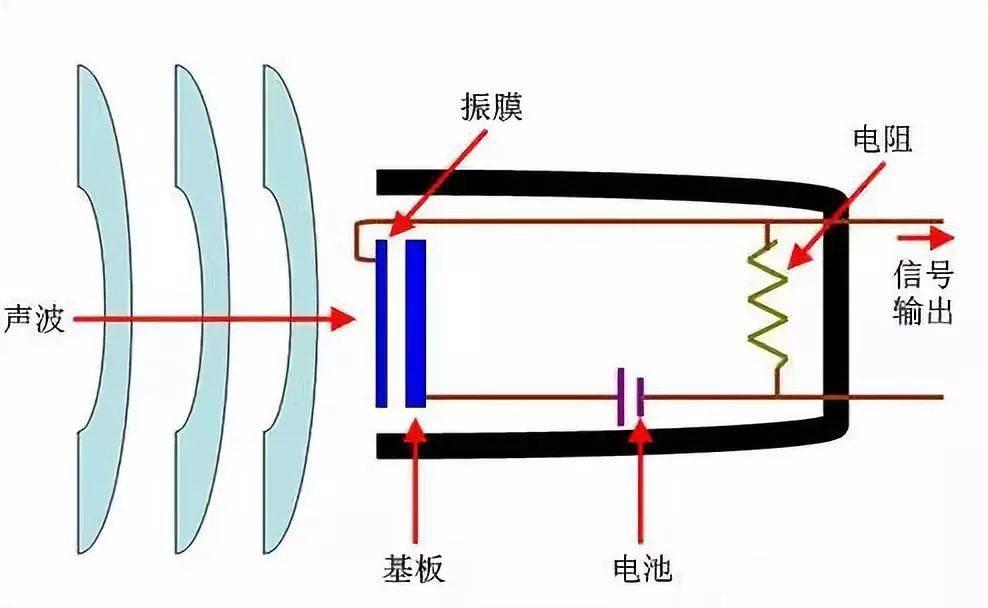Why do people generally prefer condenser microphones over dynamic microphones? This question may have been confusing you. In this issue, let's take a look at the difference between dynamic microphones and condenser microphones.
Dynamic microphones and condenser microphones are transduced differently. Although the transducer method of condenser microphones is technically advanced, it does not mean that condenser microphones are always a better choice.

Almost all microphones use a physical diaphragm to sense subtle changes in air pressure/velocity that carry sound waves. The lighter the diaphragm, the more responsive it is—the less energy it takes to move—and the easier it is to change direction when moving. So the lighter the diaphragm, the better the high frequency and transient response of the microphone.
About dynamic microphones
In a dynamic microphone, a large metal block is attached to the back of the diaphragm. The metal block is wrapped with copper wire (or aluminum wire), and a permanent magnet is placed around it. Long ago, Michael Faraday explained how the movement of a wire in a magnetic field produces an electrical current, which is how a moving coil microphone can output a waveform current that approximates a sound wave. Of course, these pieces of metal glued to the back of the diaphragm will undoubtedly make the diaphragm heavy, thus increasing the inertia of the diaphragm and reducing the sensitivity of the diaphragm - so the high frequency extension of the dynamic microphone is relatively weak, Transient response is also poor. But that's not necessarily a bad thing.
For example, many recording engineers prefer to use dynamic mics when recording close drum beats because their limited transient response acts like a compressor, ignoring the fastest transients and outputting a denser and more sensitive output. Controlled sound without transient peaks like condenser mics. The same is true when recording some heavier acoustic guitar parts, and it is also used for some special vocal songs.

Also to be clear, all of the above is just a general perception - there are some high-quality dynamic mics that have a frequency response that's not inferior to condenser mics. There is another form of 'dynamic microphone' (a microphone based on electromagnetic principles) that is also very powerful: a ribbon microphone, which still produces a current output by moving a conductor in a magnetic field, but this conductor is the diaphragm itself , usually a very thin strip of aluminum foil. The foil strips are very light, so inertia is low, and frequency and transient response are greatly improved. Sensitivity is naturally the same. It's just a pity that there is only one path through the conductor in the magnetic field (whereas there are many possible conductor paths in the coil), so the current produced is very small, and the output is relatively low. Therefore, it is necessary to increase the gain to increase the usability of the signal, but this also means that there will be more problems such as electrical noise.
About condenser microphones
It is assumed that all condenser microphones work based on the principle of static electricity, and the metal diaphragm is equivalent to a plate of the 'capacitor'. Just in case you're not already clear, just to explain a little more: A capacitor consists of two conducting plates arranged in parallel and separated by a medium called a 'dielectric' (or simply air). It stores charge, the stored charge (Q) and the distance between the plates (defined as capacitance, C), and the voltage across the capacitor (V) The relationship between the three can be expressed by a formula: Q= CV. If the back plate is fixed and the front plate is the diaphragm, any slight movement of the diaphragm caused by the sound waves will change the size of the capacitor. If the amount of charge stored in the dielectric remains constant, the voltage across the capacitor will be proportional to the desired sound.
The most common type is called a 'DC Biased Condenser Microphone' and the charge stored in the capacitor capsule is controlled by an external voltage (usually 60V) applied between the two capacitor plates by a large resistor. The change in capacitance is detected as a voltage change across the capacitor by an impedance conversion circuit (usually using a vacuum tube or FET) and converted into a stronger signal that can be passed to the output line. This 'impedance conversion circuit' is critical because it is located around the capsule and maintains a very high impedance to prevent leakage of stored charge, while maintaining a very low source impedance to the output cable so that the signal can Transfer to the mic preamp with almost no loss.

Like ribbon mics, condenser mics have no additional items on the diaphragm, so they are lightweight and have excellent frequency range and transient response. It's also very sensitive to low frequencies and can produce relatively high output levels, so it doesn't require the extra boost of gain that a typical dynamic mic does.
Therefore, it is generally accepted that condenser microphones are technically superior to all other forms of microphones - they offer the best specifications and accuracy as electroacoustic transducers. This is why condenser microphones are often referred to as 'the best studio microphones'.
However, strictly speaking, what is better is not necessarily the most suitable, whether in terms of practical needs or art.